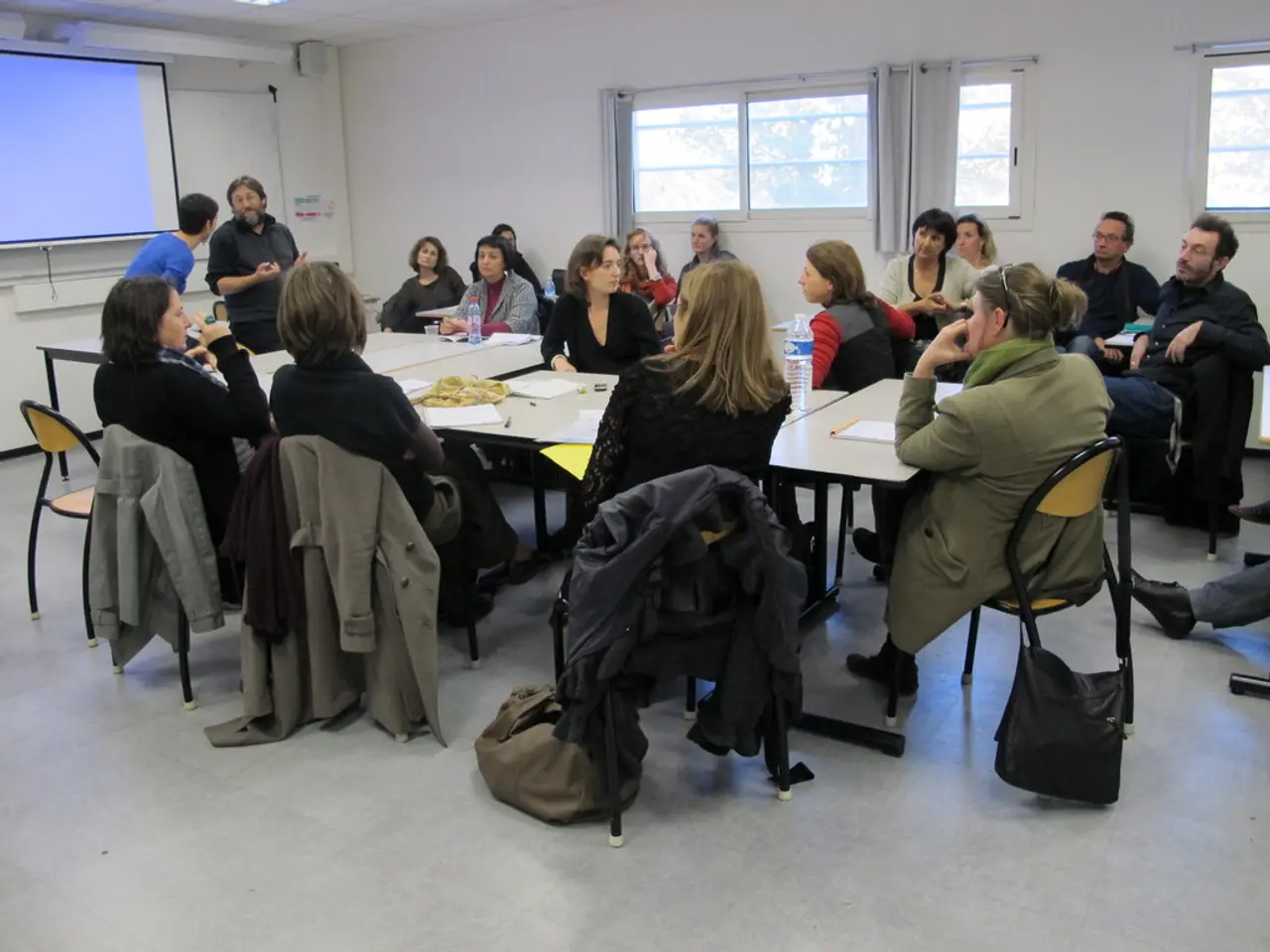Boosting Information Exchange in a Blended Work Environment
In the post-pandemic era, the hybrid workplace has become a defining feature of professional lives. To ensure success in this new model, effective communication is crucial for companies thriving in the hybrid model.
Leadership plays a crucial role in shaping the communication culture in a hybrid workplace. Leaders can cultivate an atmosphere of openness by actively seeking feedback from their teams and fostering an environment that welcomes feedback from all team members. This approach benefits team dynamics and fosters a sense of inclusivity.
Effective strategies for creating clear and inclusive communication policies focus on establishing structured communication protocols, leveraging technology thoughtfully, and promoting leadership roles that foster equity and engagement.
One key approach is defining clear expectations for communication tools and response times. Specify which tools are used for different types of communication, such as Slack for real-time chat, email for formal updates, and task management software for project tracking. Setting response time guidelines based on urgency, while respecting different time zones, helps reduce stress and misalignment.
Another important aspect is establishing communication guidelines that unify remote and on-site workers. Create standards such as expected response times (e.g., emails answered within one business day, chats within hours), and message labeling by urgency. This helps all employees prioritize effectively, regardless of location.
Leveraging technology to facilitate connection and inclusion is also essential. Use video meetings for small groups to maintain engagement, virtual social interactions like coffee chats to build bonds, and collaborative platforms that are user-friendly and adopted across the team. Thoughtful meeting design, considering size and interaction, aids participation.
Incorporating leadership training focused on inclusion is equally important. Equip managers to recognize unconscious bias, promote equity, and handle diverse communication styles within hybrid teams. Effective leaders ensure fair access to opportunities for remote and onsite employees equally.
Creating flexible and culturally aware policies is another crucial step. Acknowledge cultural and generational diversity in communication styles and work approaches, tailoring policies to include flexibility in schedules and respecting different norms.
Regularly measuring, reviewing, and adapting policies is also essential. Solicit employee feedback on communication effectiveness and inclusion metrics to continuously improve communication strategies and leadership approaches.
Implementing anonymous surveys can offer valuable insights into the feelings of team members in a hybrid workplace. Providing relatable examples or scenarios can help illuminate abstract concepts in policies, making them more digestible.
A workplace committed to inclusion often experiences heightened morale and collaboration in a hybrid workplace. Recognizing individual contributions during team meetings can foster inclusivity, while regular feedback sessions allow all employees to contribute to discussions about workplace policies.
Streamlining communication channels through regular video check-ins and actionable updates can ensure alignment within a team. The impact of empathetic leadership cannot be overstated, as it can make team members feel genuinely valued in a hybrid workplace.
Utilize various communication methods to reach everyone effectively in a hybrid workplace. Encourage active participation from all team members and create environments where every voice is acknowledged, regardless of physical presence. New work-from-home guidelines should be clear and comprehensive to avoid anxiety among employees.
Collectively, these strategies build a communication system that supports clarity, inclusivity, and efficiency, leveraging technology and leadership focus, essential for hybrid work success.
AI can be integrated into communication technology to analyze and enhance the effectiveness of communication in a hybrid workplace. For instance, AI chatbots can be used to manage repetitive tasks, freeing up team members to focus on more complex tasks.
In addition, AI can help identify patterns in communication to suggest improvements in policies, fostering a more unified and inclusive workplace. Machine learning algorithms can analyze response times, message patterns, and feedback to offer data-driven suggestions for better coordination among team members.




